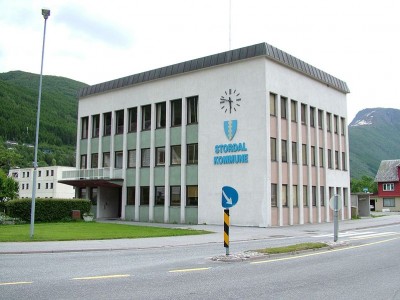A third of the jobs in the Norwegian furniture industry have disappeared in the past six years, but officials don’t want the sun to set on a business that’s been a major employer not least in mountain communities. The finance crisis of 2008, high exchange rates caused by Norway’s strong currency and ever-rising wages have been blamed for closures and downsizing, leaving thousands of square meters of empty furniture factory space in towns across Norway.

The local industry traditionally produced about 35 percent of furniture sold in Norway, and is worth NOK 8.4 billion (USD 1.4 billion) a year, reported newspaper Aftenposten. A third of the furniture and interiors produced in Norway in 2012 were exported internationally. The majority of the industry is based in the Møre area of central Norway, and throughout southern Norway.
The small municipality of Stordal is part of Sunnmøre, Møre og Romsdal county’s southernmost district. The area’s thousand residents have borne the brunt of the industry downturn, said mayor Charles Tøsse.
“My predecessors used to say that we had fewer unemployed here than there were furniture factories,” Tøsse told Aftenposten. In the industry’s 1990s heyday, official statistics showed just one unemployed person in the area. Half-a-dozen factories in the region provided jobs for 450 workers. About 200 of them commuted into the area, and created a thriving town centre.
That’s changed dramatically. The four remaining factories have less than 100 staff. Unemployment in Stordal is now at 6 percent, the highest of all municipalities in southern Norway. Many fear the number will get worse before it gets better, and all blame the furniture industry for the job losses.
Production outsourced
Håkon Vad is from furniture company Vad AS, one of four producers in the area. He said they had no choice but to cut jobs. “The last five years we’ve lost NOK 10.8 million,” he explained. “We had to either close down the whole business or flag out production.” Over summer Vad made a deal with a Lithuanian factory to produce mainly office furniture for its contract market, costing 20 jobs in Stordal.

Lars Kristian Øvrebust is among Vad’s remaining employees. He is tasked with teaching the Baltic staff how to produce the furniture to the company’s standard. “The challenge with Norwegian furniture is obvious,” he told Aftenposten. “We would have liked to continue, but I don’t see how we could have done so. I think there’s a limit on how long Norwegians would pay NOK 10,000 more for a Norwegian chair than for an equivalent chair produced overseas.” He blamed high wages for the outsourcing, and said Vad won’t be the last to shift production to factories in lower-cost countries.
Tøsse told Aftenposten he’s worried about the community in the long term, but said he’s choosing to focus on the possibilities. Stordal has been granted NOK 4 million from Møre og Romsdal county to support a growth project it’s working on, aimed at creating 75 new local jobs. “If nothing changes, I’m scared we’ll see some ugly numbers,” he said. “But we’re rolling up our sleeves and continuing on.”
Some bright points
It’s not all doom and gloom for the industry. While many furniture companies recorded weaker results last year than normal, Norwegian furniture production still grew by 4.5 percent according to 2012 figures. It was the second year of growth, after several years of decline. Many producers are continuing to generate a lot of interest. Stokke AS, the company responsible for the famous Norwegian-designed TrippTrapp stool, was bought out last month for an estimated NOK 3 billion.
In Stordal, a small resurgence is offering hope. One furniture company which went bankrupt in June has restarted production. Stordal’s smallest furniture firm Sitwell said it has found a niche market in producing high-end furniture for mature- shoppers.
Egil Sundet from Norwegian Industry (Norsk Industri) said many of the large and mid-sized companies are managing fairly well. “It’s the small businesses, those with less than NOK 70 to 80 million in turnover which are struggling,” he said. Competitiveness is improving after several tough years of restructuring. “In important markets like Germany and the USA there’s increasing demand,” he said. “In other countries there are also signs things are beginning to go in the right direction.”
newsinenglish.no/Emily Woodgate

